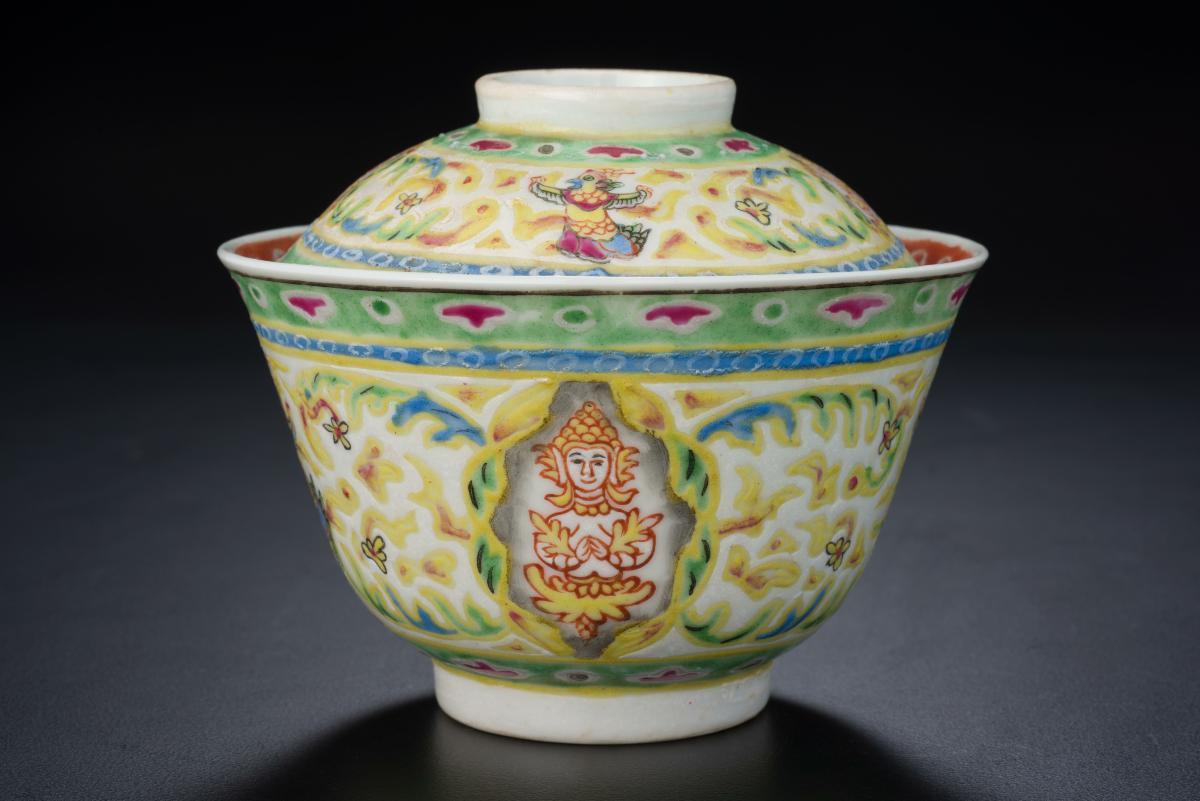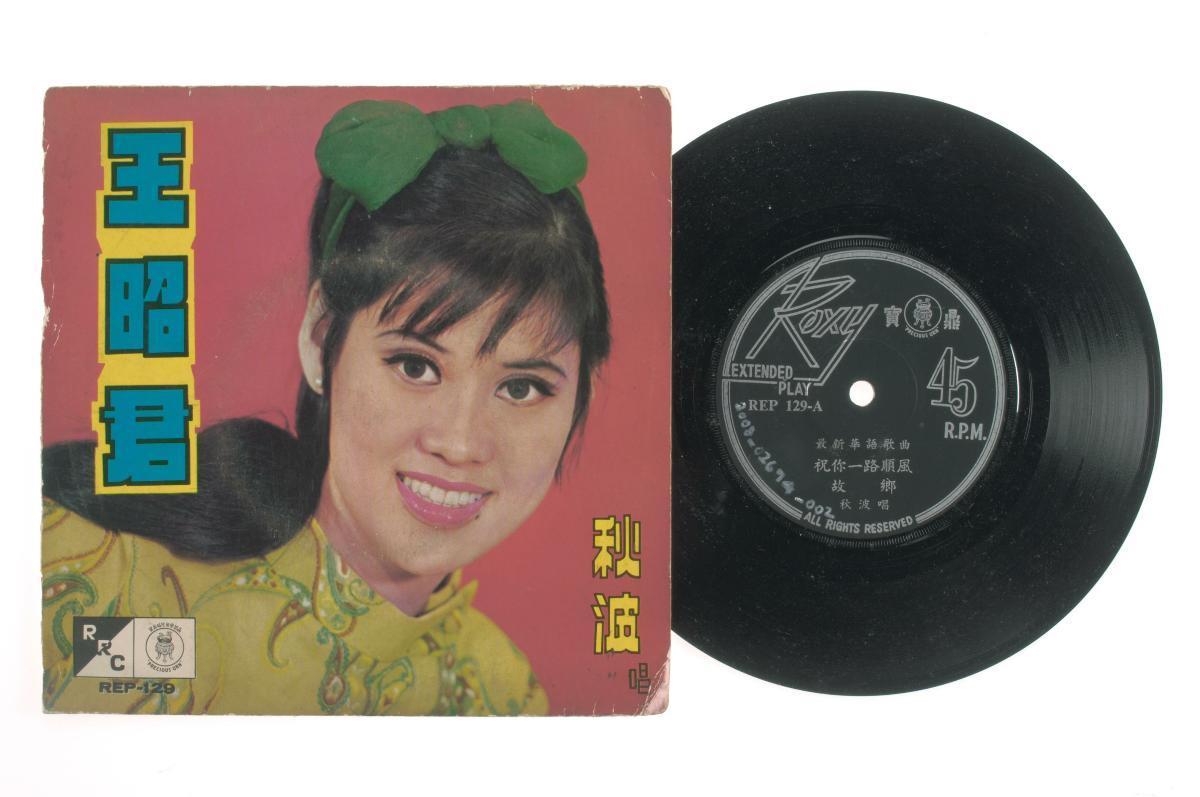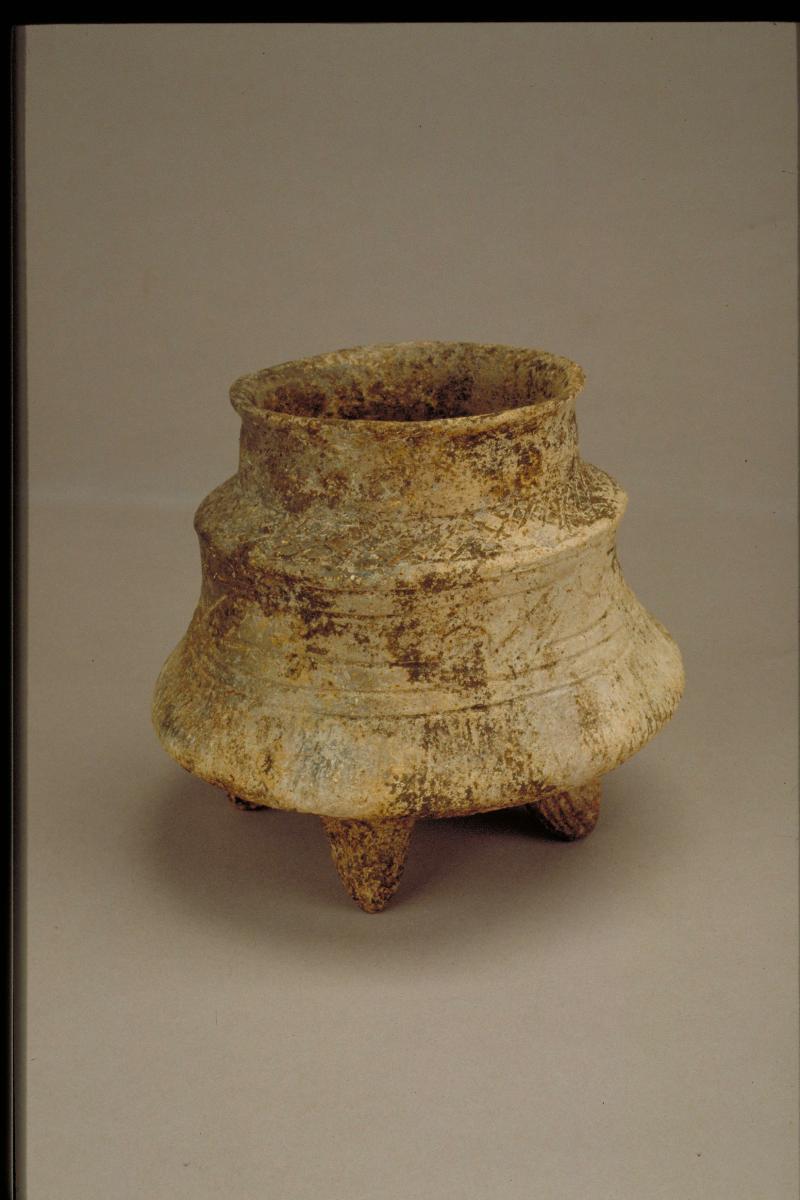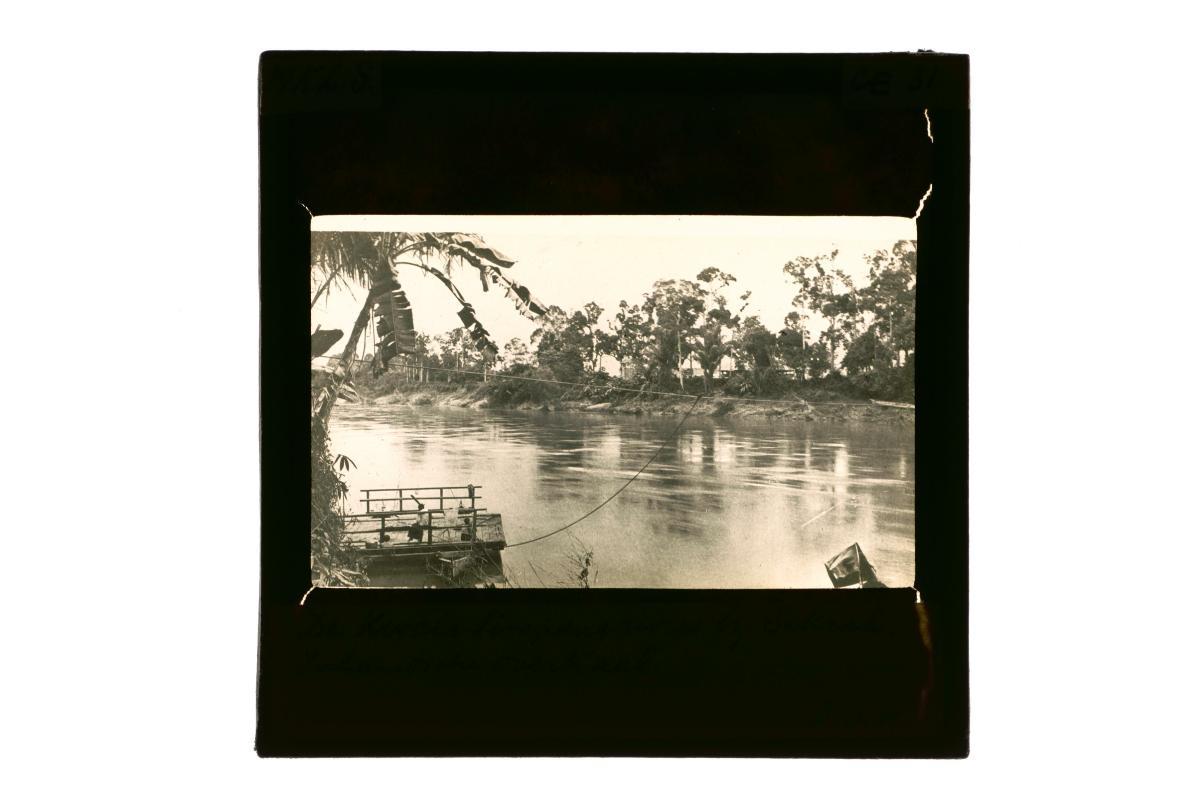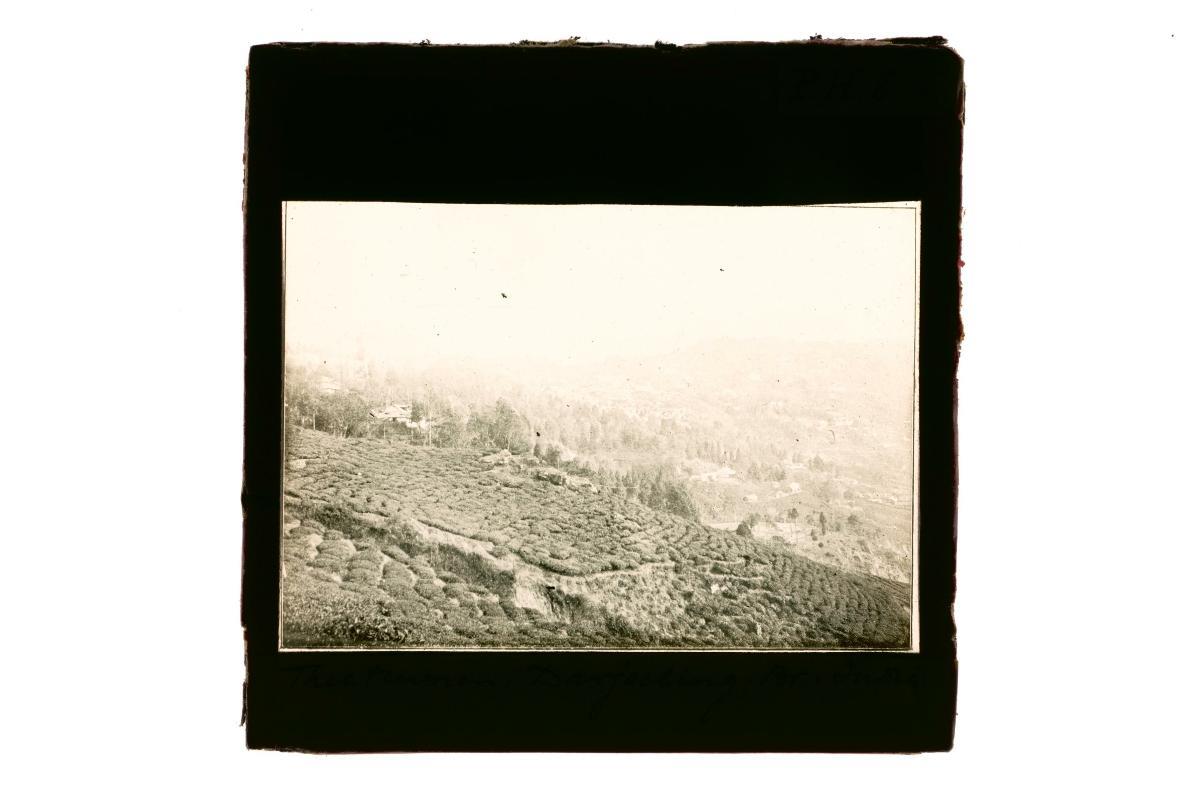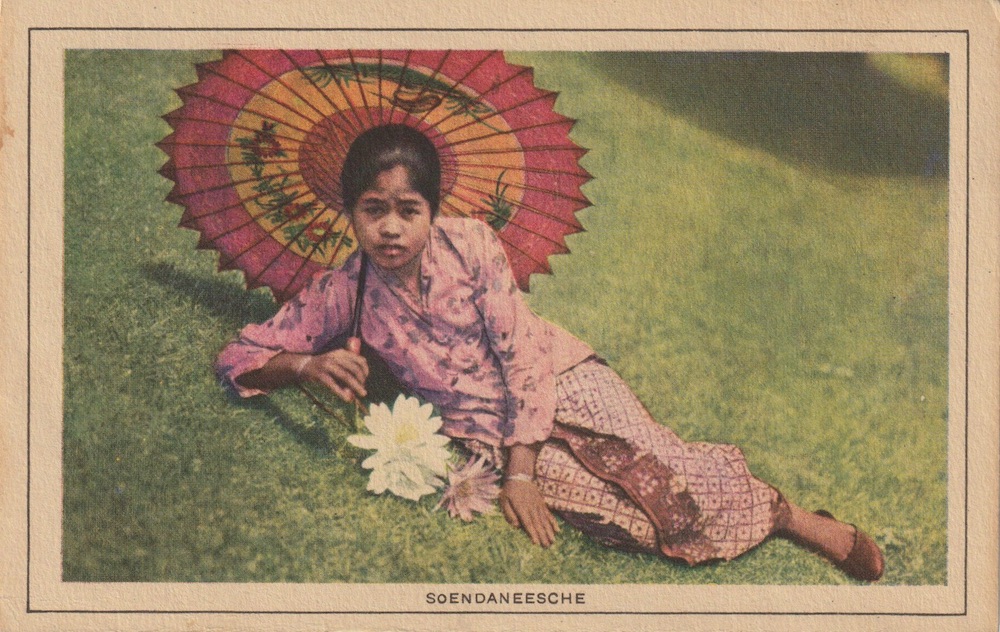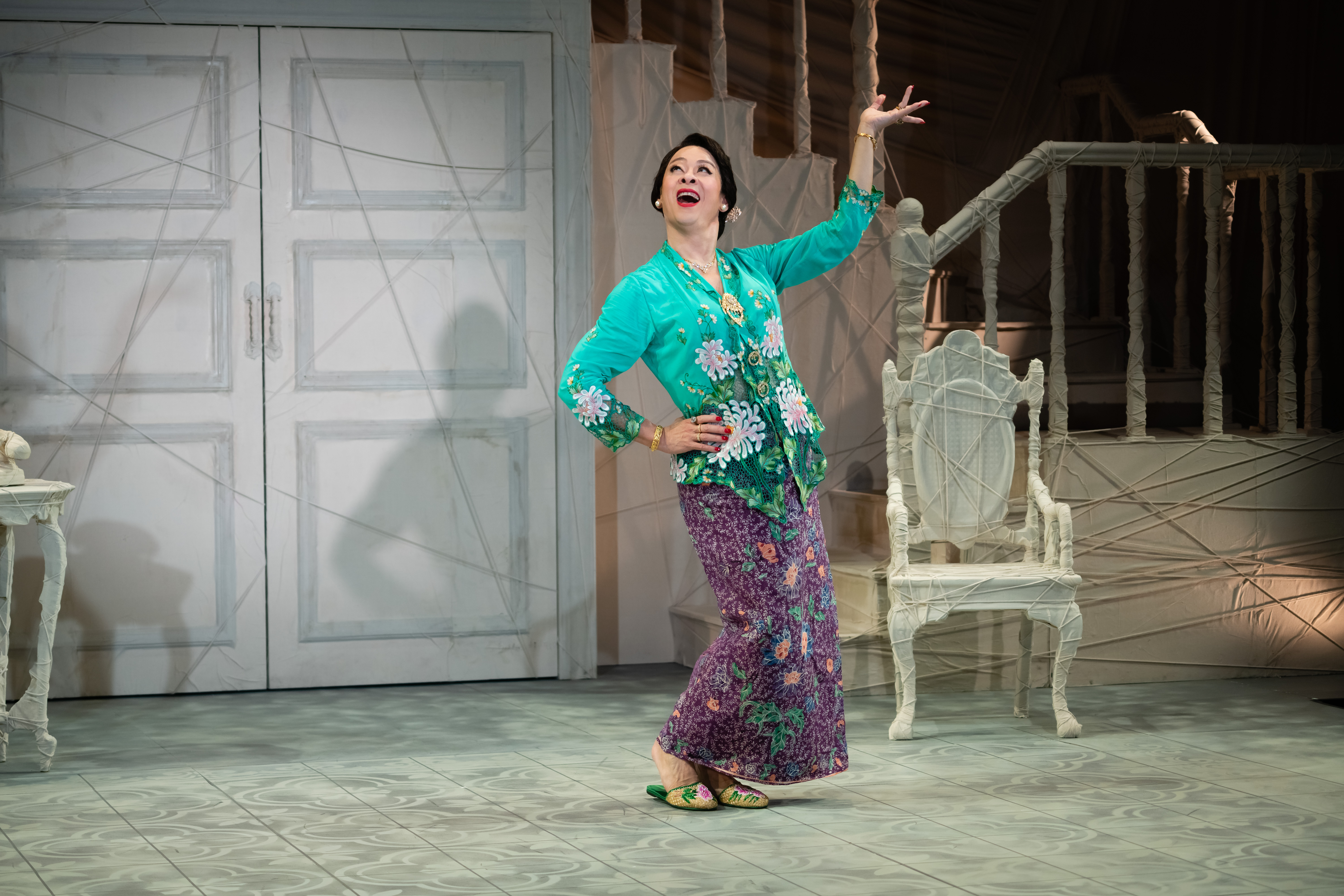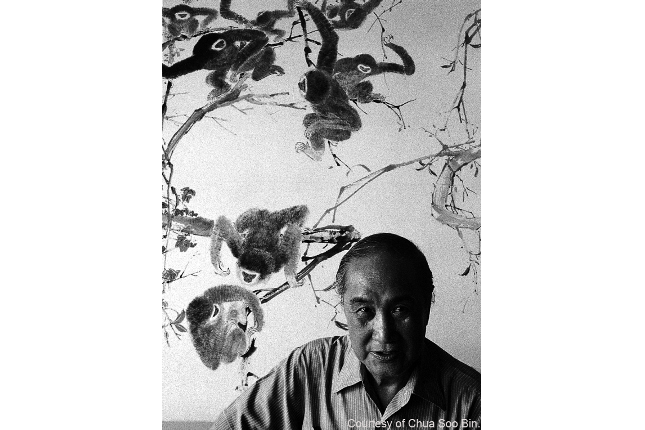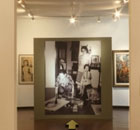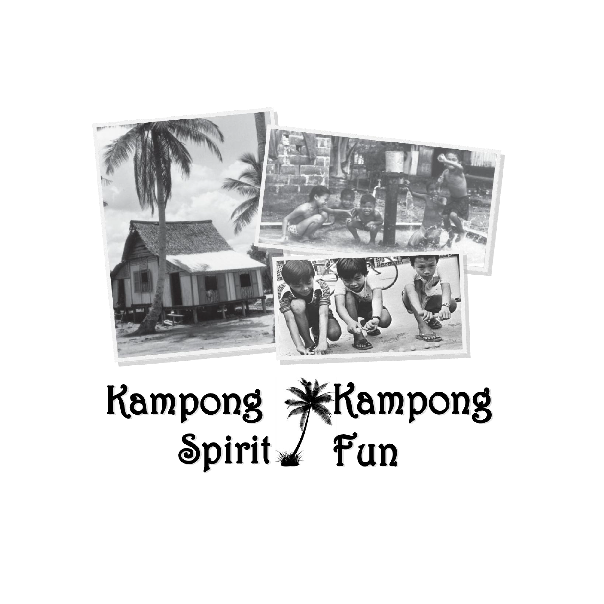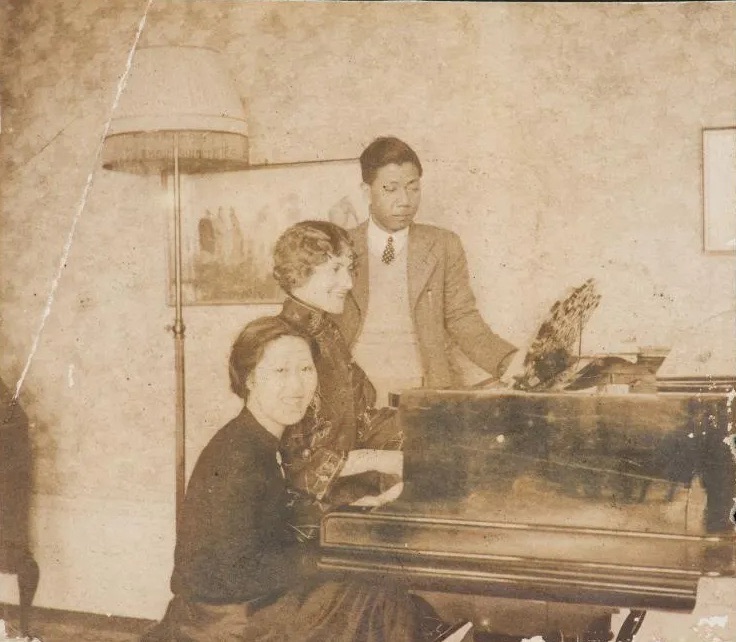This covered bowl consists of a bowl fitted with a cover that is made like a smaller, shallower version of the bowl itself. A slightly raised surface forms a flat and wide knob on tip of the cover. The bowl’s body gently flares outwards, with the cover resting within the bowl, revealing a muted red glaze on the interior.This covered bowl is decorated with motifs of the thep phanom, a male deity in “lotus” position, and the garuda, a bird-man and vehicle of the Hindu God Visnu. Here, garuda is dancing amidst the kranok, a flame motif that has a long tradition in Thai art as a symbol of the flame of Buddhism. In this case, the kranok is set against a white background. The garuda is a stately looking figure with a falcon-like head turned sideways, a human torso with outspread wings and the talons of a bird. He wears a pointed hat, necklace, belt and short trousers. One of Vishnu’s incarnations is Rāma, the main figure in other Indian national epics. Thus Thai Kings bearing the name Rāma, are seen as incarnations of god. Depicted on Bencharong porcelain, this is fitting for use by the Thai Royal court.The cross-cultural influence of Chinese export ware holds significant bearing on social and cultural practices that is to develop in many parts of Southeast Asia, including Thailand. For example, the configuration of the bowl is a commonly associated Chinese shape that has become one of the most popular forms to be exported and adopted by Thailand. However, this object also illustrates a Siamese-initiated preference for covered bowls in the late reign of Rama I (1800-1809) that reached its greatest popularity in the reign of Rama III. During that period, the use of covered bowl equaled or possibly exceeded that of the open bowl. The covered bowl was used as a container for food at royal table settings and the Siamese court often ordered the covered bowl shape in sets. The covered bowl is functional in form, in line with the utilitarian purposes of Bencharong wares. Produced in the 19th century for export to Thailand, this was probably produced in Guangzhou or Jingdezhen where workshops crafted objects tailored to the demands of foreign markets. The object is in fine condition with no sign of chipping or cracks.




